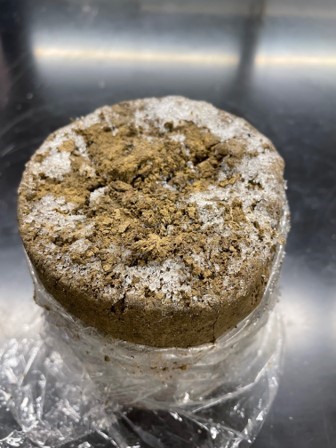Water expands when it freezes. This simple yet fundamental
fact of nature can lead to cracks in building foundations, crumbling roads and huge
rocks that fall onto canyon roadways from the cliffs above.
Past research into this problem has shown that when
the ground freezes tiny pockets of ice trapped in the soil expands. This can
create what is known as frost-heave in the winter and in the spring, when
ground thaws it creates thaw-weakening settlement. Over time this freeze-thaw
cycle causes damage to the ground and poses major challenges for human made
structures, like bridges, dams, pipelines, buildings, roads and homes. Each
year, the freeze-thaw cycle leads to billions of dollars in mitigation and repair
costs around the world.
Now, a team of scientists and engineers at South Dakota Mines has received $453,000 in funding from
the National Science Foundation to seek solutions to these problems.
“We are trying to understand more about the
fundamentals of ice formation underground and if there are natural methods that
we can use to stop or control the ground from freezing,” says Tejo V. Bheemasetti,
Ph.D., assistant professor in the civil and environmental engineering department
at South Dakota Mines.
 A frozen soil sample.
A frozen soil sample.
Bheemasetti is working alongside Bret Lingwall,
Ph.D., associate professor in the civil and environmental engineering
department at South Dakota Mines. The multidisciplinary project also includes a
group of biologists at Mines, led by Rajesh Sani, Ph.D., a professor of chemical
and biological engineering. The team is studying antifreeze proteins released
from microorganisms that live in cold environments. These microorganisms naturally
produce antifreeze proteins which keeps them alive in frigid conditions.
Scientists want to know if this same kind of naturally-occurring antifreeze
could be used as an environmentally-safe treatment in areas where the
freeze-thaw cycle poses a threat to infrastructure.
“We are trying to develop a solution that is
compatible with mother nature, so this requires both civil and biological
engineers working together. It’s a
wonderful interdisciplinary project,” says Bheemasetti.
Currently, engineers sometimes remove soils around
structures that are susceptible to damage from the freeze thaw cycle. For
example, they will pack gravel under the pavement that will behave better in
freezing conditions. “If we could
stabilize the soil with bacteria that contain natural antifreeze, we may be
able to save money and time in construction,” says Bheemasetti.
Bheemasetti adds that a lot of research is needed
before any of these ideas would be used commercially. “Before we ever test this
in the field, we are testing it in the lab,” he says. “We will study how these
natural antifreezes might work with various types of soils and how it might
inhibit ice formation. This might have more applications than just protecting
infrastructure.”
Bheemasetti uses environmentally-controlled reaction
chambers that mimic frigid outdoor conditions to test various forms of
naturally-occurring antifreeze in various soil types in various mixes and
amounts. “We are trying to narrow many variables including optical mixing rates,”
he says. “We are expecting the freezing point of treated soil will be much
lower than normal.”
Sani and his team have spent years working on
extremophilic bacteria, or microbes that thrive in hot water. Over the last
year researchers expanded their work to include psychrophilic bacteria, or microbes
that thrive in cold conditions. “Dr. Sani has provided the naturally-occurring
antifreeze and the psychrophilic bacteria he has grown in his lab. We will use his
bacteria in our study of various soil types,” says Bheemasetti.
Developing a naturally-occurring and environmentally-safe antifreeze could have much wider applications than just soils. “Once we
find one that works we can use the bacteria itself or come up with a bio-mimicking
synthetic version that is much better for the environment,” says Bheemasetti.
The team has already begun its work on the
three-year project. If successful, the next phase of the project could include longer-term
field tests on a more real-world environment. “The solutions are there, the
exact path uncertain, but it’s exciting to be taking these first steps,” says Bheemasetti.